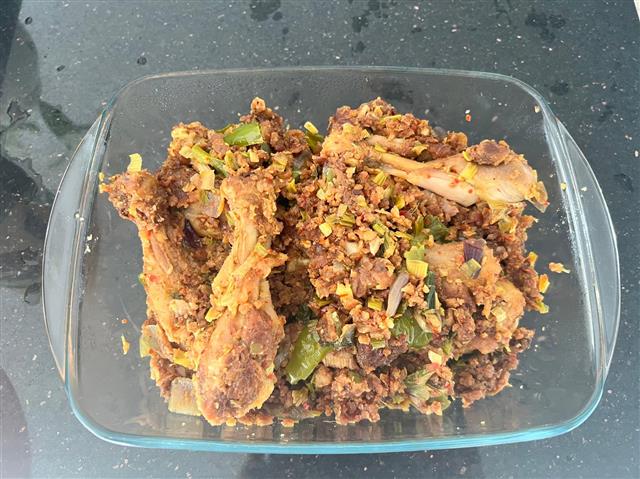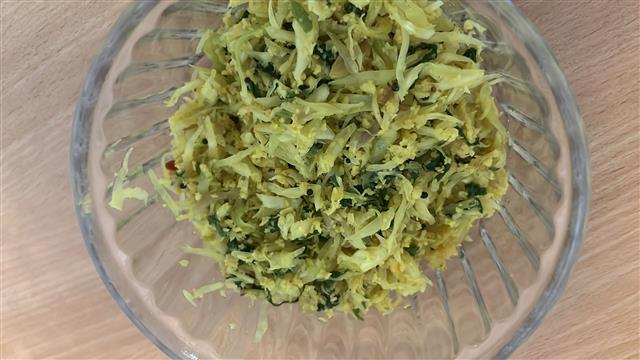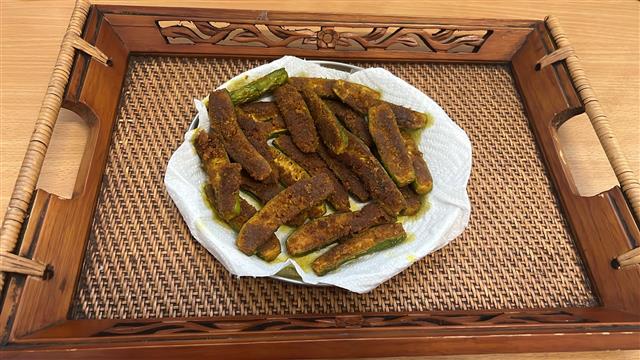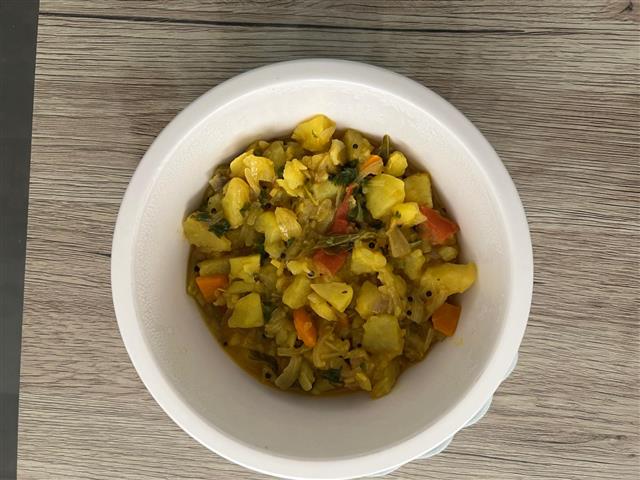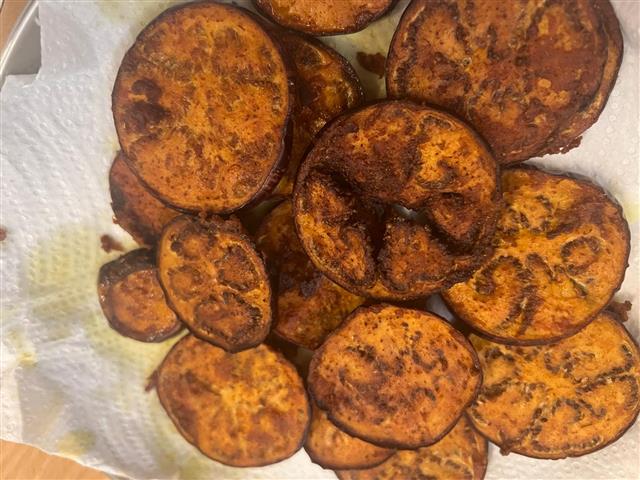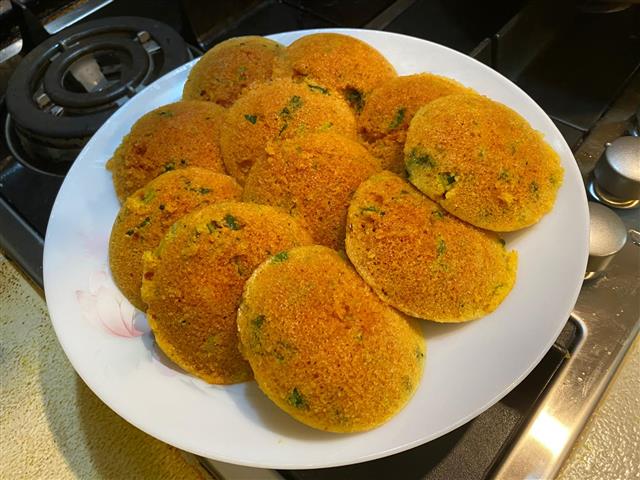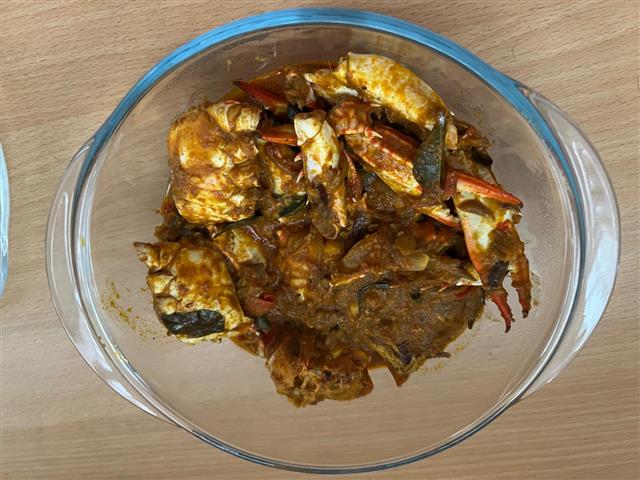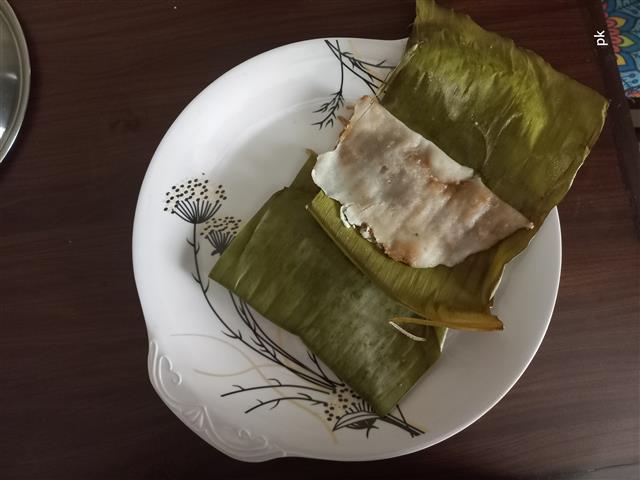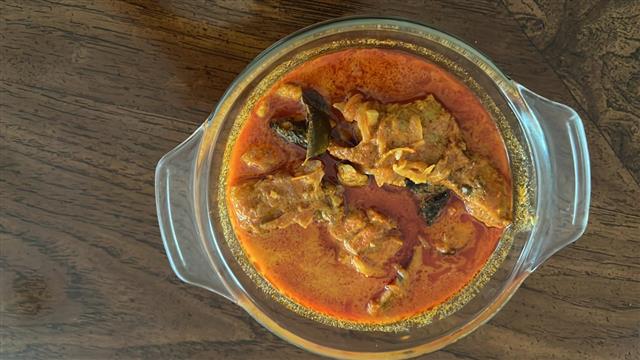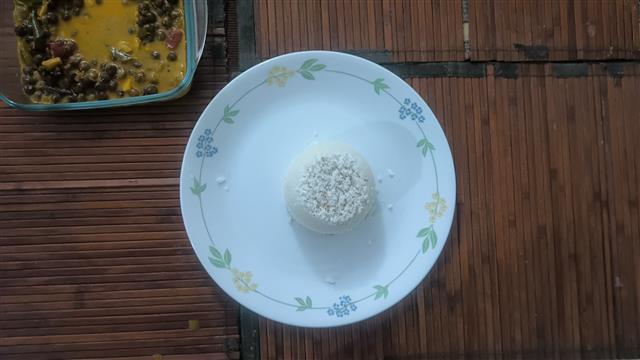
Ayala Curry
(4 reviews)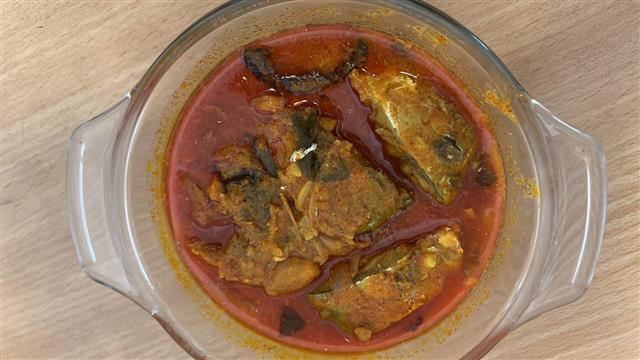
Rich, tangy, and hearty, this mackerel curry is a classic coastal dish. Simmered in coconut milk, Ayala Fish Curry gets its sour punch from Kudampuli or the unique Malabar Tamarind.
Ayala Curry is one of Kerala's most cherished fish curries, known for its distinct blend of chilli, fenugreek, and Malabar tamarind.
While this dish celebrates Ayala or Indian mackerel, some use the masala base to cook sardines or mathi meen and other flaky fish varieties.
Ingredients
Directions
- Preparing the fish: Buy medium-sized cut pieces or cut them yourself. Use or discard the head (as per your preference. Clean the cut fish pieces well and set aside.
- Soak the kudampuli in water for 5 to 10 minutes and slice the shallots
- Add chilli powder, coriander powder, turmeric powder with one tablespoon of water and mix well.
- In a pan, heat the coconut oil. Add fenugreek seeds, shallots, ginger and curry leaves.
- Add the soaked masala and saute well.
- Add Malabar tamarind (kudampuli) and coconut milk and mix well.
- Add the fish and cook well until it is tender and the coconut milk has thickened.
Cooking Tips
• Use fresh and well-cleaned Indian Mackerel (Ayala), Cut into 3 to medium-sized pieces per fish.
Tip: If using frozen fish, let it thaw completely and pat dry before cooking.
• Prep the masal by adding some water to form a smooth paste.
• Soften the shallots and let it brown slowly.
• Simmer the tamarind in coconut milk to bring out the sourness.
• Use thick coconut milk for creaminess or thinner milk for a lighter curry.
• Simmer coconut milk gently on low heat to avoid curdling.
How to Serve
• With Kerala matta rice or ghee white rice
• With Kappa Vevichathu (mashed tapioca) for a traditional combo
• With Idiyappam or dosa for a light meal
• With Chapati or parotta
• With Millet or Ragi for a protein-rich meal
The Story Behind Ayala Curry
Ayala Curry isn't just a dish but a cherished recipe in most coastal Malayali households. It is simple, flaourful, and cooked in every region with slight local variations.
This curry, like the Kerala Meen or Fish Curry, is a food story that emerges from the one of backwater kitchens with their seasoned clay pots and fresh catch of the morning. While the fish curry is slightly sweet from the coconut milk and shallots, Ayala Curry leans towards tangy with sharper flavours.
Unlike meat curries that require marination, layering or multiple cooking steps, this and most fish curries are easier to make. You need to know how much masala and tamarind to use and learn to identify when the fish is cooked through.
In my childhood, this curry was our fallback on both busy weekdays and leisurely weekends. I've perfected this recipe by borrowing from the knowledge passed on by both of my ammammas. Mom was a great cook and intutive about the preparation. She would crush the ginger with the side of her knife and never measure the fenugreek seeds or turmeric. All of it was muscle memory or should I say cooking memory?
She would soak the kodampuli early in the morning, and leave it left to darken the water and spread its sourness. And the fish? She insisted on cleaning by hand and getting the fish vendor to cut the fish head to save time.
What Is Kerala Ayala Curry Or Kerala Mackerel Curry?
Ayala Curry is a traditional fish curry made with mackerel, native to Kerala's coastal cuisine. It combines regional ingredients like kodampuli (Malabar tamarind), fresh coconut milk, ginger, and shallots with the signature spice blend of chilli, turmeric, and fenugreek seeds.
While the dish varies slightly between households, the essence remains the same. Earthy, tangy bordering on sour, and yet creamy and tender in every bite.
Unlike tomato-based curries found elsewhere, Kerala fish curry uses souring agents like kodampuli or raw mango and coconut milk or ground coconut paste.
My version is typical of southern Kerala, with the abundant and cheap mackerel fish thai is favoured for its strong flavour that matches the robust masalas we use.
Regional Kerala Variations
Malabar Region Often made with roasted coconut paste and more chillies, giving the curry a darker, thicker base.
Kottayam Style
Uses more kodampuli and very little coconut milkto give you a fiery, red curry with intense sourness.
Travancore Region Adds a dash of cumin and chopped tomatoes to mellow the tamarind.The curry is slightly sweeter.
Other regional Variations
Tamil Nadu's Meen Kuzhambu (Fish Samabar) Similar to Ayala Curry but uses tamarind pulp instead of kodampuli. The homecooks also add ground fennel and mustard seeds.
Andhra's Chepala Pulusu Spicier with green chillies and gingelly oil. THis version does not use coconut paste or milk . Kerala's version stands out for its balance between the bitterness of fenugreek, the creaminess of coconut milk, and the tanginess of kodampuli. Unique flavour combination that showcases Malayali love for seafood
This Mackerel Curry recipe follows the same soul food tradition of Kerala Crab Masala or Mathi Meen Masala. If you loved those dishes, this one provides you with a spicier and rustic way to enjoy seafood.
Pro Tips for Perfect Results
→ Sauté the soaked masala in oil: Brings out the colour and aroma without burning the spices.
→ Gently place the fish piece in the simmering milk: Prevents the fish from breaking apart.
→ Avoid stirring vigorously: Swirl the pan a few times or move the fish around with a slotted wooden or silicon spoon.
→ Let the curry rest for 30 minutes after cooking; Helps the fish absorb more flavour.
→ Use a wider pan instead of a deep pot: For even cooking and to avoid the breaking of fish.
→ Garnish with fresh curry leaves and add a drizzle of coconut oil: For extra zest and depth
Ayala Curry Variations
- Without Coconut Milk
For a rustic and low fat style, skip the coconut milk and cook the fish entirely in the tamarind-spice mix.
- With Tomato
Add a chopped tomato with the masala to soften the sharpness of the kodampuli or to skip the tamarinand.
- With Shallot-Garlic Paste
Blend sautéed shallots and garlic into a coarse paste and use it as the base for a thicker, homier curry.
- Fry the Fish First or Varuth Meen style
Lightly fry the mackerel pieces before adding to the curry for added texture and a smoky flavour.
- Add Vegetables
Drumstick, raw mango, or green plantain chunks are sometimes added for variety and tang.
Diet-friendly Adaptations Low-fat: Skip the coocnut milk and swap with water for the liquid.
Gluten-free: The disj is naturally gluten-free. Avoid serving with chapati or parotta.
Storing & Reheating Tips
→ Fridge: Stores well for 2 days in an airtight container.
→ Reheat: Warm slowly on the stovetop. Add a splash of hot water if the curry has thickened to thin it out.
→ Freeze: Not ideal. The texture of fish and coconut milk both change on thawing.
Tip: Like most Kerala fish curries, this tastes better the next day after resting.
Common Mistakes to Avoid
→ Using too much tamarind: Can overpower the dish with bitterness. 3 to 4pieces are sufficient.
→ Boiling coconut milk: Always keep the flame low after adding coconut milk to avoid curdling.
→ Overcooking the fish: Mackerel cooks quickly. Remove from heat as soon as it flakes.
→ Skipping the resting time: Letting the curry sit enhances its flavour by a vast degree.
→ Stirring constantly: Causes the fish to break up and ruins the dish.
Frequently Asked Questions
- Can I use canned mackerel?
Fresh or frozen mackerel is best. Canned mackerel is pre-cooked and won't absorb masala the same way.
- Can I replace kodampuli with tamarind paste?
Yes, in a pinch, but the flavour will be different. Kodampuli has a smoky, fermented depth that regular tamarind lacks.
- Is this curry spicy?
It's moderately spicy with a distinct sourness. You can reduce chilli powder or use Kashmiri chilli for colour without heat.
- Can I use other fish?
Yes, sardines, pearl spot, or even kingfish work well with this preparation.
Equipment Needed
→ Flat and shallow pot or Clay Pan (Manchatti) – Traditional and best for even heat
→ Spice Spoon
→ Slotted Spoon – Avoid sharp spoons that break the fish
→ Lid for Simmering
→ Measuring Cup and Bowls for spices and soaking
